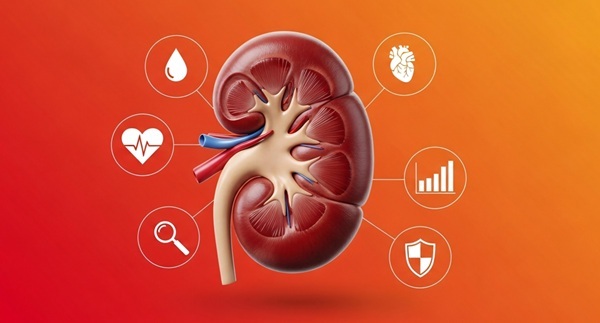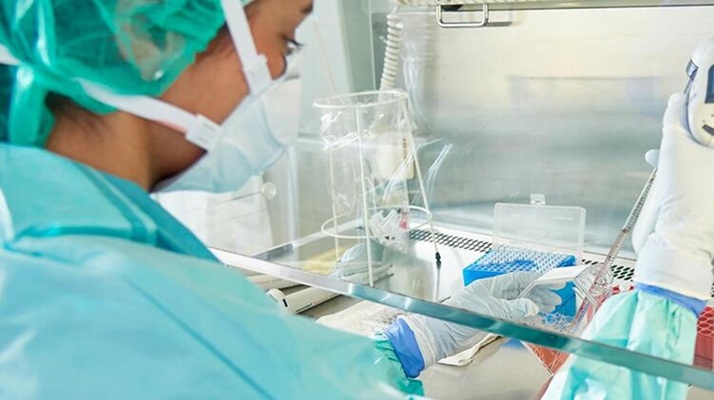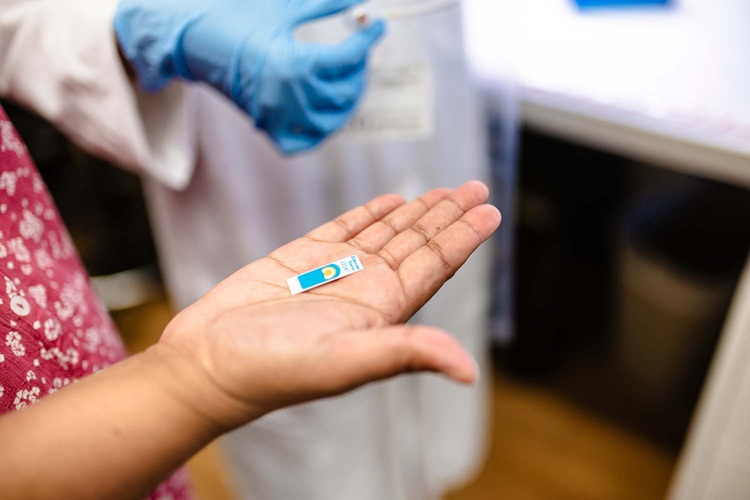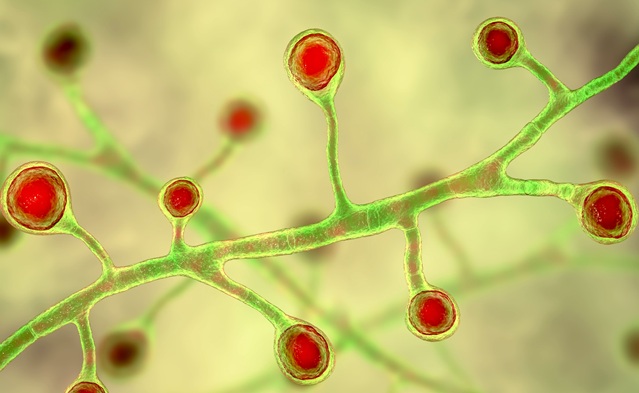Mercado mundial de analizadores de química clínica impulsado por mayor volumen de pruebas y TAT más corto por la automatización
|
Por el equipo editorial de LabMedica en español Actualizado el 12 Apr 2022 |

Chemistry analyzers are medical laboratory devices used to measure the concentration of particular compounds inside samples of serum, plasma, urine and other body fluids. Substances tested by this equipment include specific metabolites, electrolytes, proteins, and medicines. In today's shifting healthcare environment, laboratories all over the world are under pressure to improve patient care while lowering operating costs. It is one of the most essential aspects of clinical laboratory analysis, and the clinical chemistry analyzer market has made significant progress in recent years. A wide range of tests, including diabetes testing, liver and kidney function, and electrolytes, as well as lipid profiles, thyroid testing, antibiotic drug level monitoring, and other drug level monitoring tests, can now be performed in the physician practice lab using an efficient, state-of-the-art chemistry analyzers.
The global clinical chemistry analyzer market was valued at over USD 12 billion in 2021 and is anticipated to grow at a CAGR of 4.8% over the forecast period (2022-2030). Leading manufacturers in the market are focused on providing a wide range of features such as interactive touch screen interface, advanced optics, on-board curve-fitting software, bichromatic and monochromatic reading, long-lasting IAD filters, and much more. In recent decades, the clinical chemistry instrumentation business has seen a rapid evolution of technological improvements. Novel features, such as closed tube sampling, automated maintenance processes, streamlined calibration, and internet-based remote diagnostics, have been introduced with each new system generation. These intend to help laboratories better meet the needs of physicians and patients while creating efficiencies, driving quality, lowering costs, and addressing workforce fluctuations. Thus, these factors are driving the growth of the global clinical chemistry analyzer market. These are the latest findings of Absolute Markets Insights (Pune, India), a market research company.
Based on type, automated clinical chemistry analyzers are gaining huge popularity as automation in clinical chemistry is resulting into higher volume of testing and a shorter turnaround time. When handled by laboratory specialists, the utilization of automated analyzers that can combine a variety of assays, assay types, reagents, software and peripherals provides a holistic package for enhancing clinical efficacy and outcomes. Moreover, automated analyzers improve user safety from biohazards and reduce the possibility of cross-contamination along with providing increased throughput. The leading players in the market are focused on incorporating advanced technologies into their analyzers.
In the last few years, there has been a rise in healthcare awareness among a large population which has led to a rise in clinical testing. The testing of molecular functions is gaining popularity as these tests measure blood sugar, electrolyte, fluid balance, and kidney function which are vital for the early detection of chronic diseases. Moreover, rising concerns over cardiac diseases have also led to increased demand, as these cardiac marker tests measure specific biological markers (biomarkers) in blood to detect various heart diseases. Clinical chemistry analyzers provide high throughput point-of-care solutions for the diagnosis of myocardial infarction and other cardiac-related diseases by measuring the levels of STAT, cardiac troponin, CKM and CKB, myoglobin. Thus, these factors are boosting the demand for clinical chemistry analyzer market globally.
Geographically, Asia Pacific is anticipated to be the fastest growing region in the global clinical chemistry analyzer market over the forecast period. The geriatric population in countries such as China, Japan and India is increasing rapidly, leading to a rise in various age-associated diseases such as hypertension, kidney issues, diabetes, liver problems and others. As these health problems require various tests such as basic metabolic panel, lipid profiles to be carried out, the demand for clinical chemistry analyzers is rising in the Asia Pacific region.
Enlaces relacionados:
Absolute Markets Insights
Últimas Industria noticias
- Abbott adquiere Exact Sciences, empresa de detección de cáncer
- Roche y Freenome colaboran para desarrollar pruebas de detección del cáncer
- Co-Diagnostics crea nueva unidad de negocio para desarrollar diagnósticos con IA
- Qiagen adquiere empresa de ómica unicelular Parse Biosciences
- Puritan Medical Products presenta sus innovaciones en AMP2025 en Boston
- Advanced Instruments se fusionó como Nova Biomedical
- Bio-Rad y Biodesix se asocian para desarrollar ensayos de PCR digital de gotas complejos
- Hologic será adquirida por Blackstone y TPG
- Bio-Techne y Oxford Nanopore acelerarán desarrollo de su cartera de productos genéticos
- Terumo BCT y Hemex Health colaboran para mejorar acceso a pruebas para detectar trastornos de hemoglobina
- Revvity y Sanofi colaboran en programa para revolucionar detección temprana de diabetes tipo 1
- GSI Group adquiere fabricante de equipos para procesar sangre GenesisBPS
- ELITech y Hitachi High-Tech desarrollarán sistema automatizado de pruebas PCR para enfermedades infecciosas
- Lumiquick adquiere Aoxre para ampliar sus capacidades globales de investigación y IVD
- Lunit y Agilent se asocian para desarrollar diagnósticos de cáncer con IA
- Qiagen y Oxford Gene Technology se asocian para interpretación de paneles de secuenciación
Canales
Química Clínica
ver canal
Sonda de imágenes químicas podría rastrear y tratar cáncer de próstata
El cáncer de próstata sigue siendo una de las principales causas de enfermedad y muerte en hombres, y muchos pacientes desarrollan resistencia a las terapias hormonales bloqueantes convencionales.... Más
Discrepancia entre dos pruebas comunes de función renal indica problemas de salud graves
La creatinina ha sido durante mucho tiempo el método estándar para medir la filtración renal, mientras que la cistatina C, una proteína producida por todas las células humanas, se ha recomendado como marcador... MásDiagnóstico Molecular
ver canal
Prueba de orina detecta neuropatía hereditaria indetectable en pruebas genéticas
La neuropatía relacionada con la sorbitol deshidrogenasa (SORD) es uno de los trastornos nerviosos hereditarios más comunes. Sin embargo, el diagnóstico suele retrasarse porque las pruebas genéticas actuales... Más
Prueba genómica predice riesgo de metástasis de carcinoma espinocelular
El manejo del carcinoma escamocelular (CEC) cutáneo en pacientes con uno o más factores de riesgo representa un desafío clínico significativo, especialmente porque se estima... MásHematología
ver canal
Análisis sanguíneo de actividad plaquetaria en mediana edad podría identificar riesgo temprano de Alzheimer
La detección temprana de la enfermedad de Alzheimer sigue siendo una de las mayores necesidades insatisfechas en neurología, sobre todo porque los cambios biológicos que subyacen al... Más
Medición de microvesículas podría detectar lesiones vasculares en pacientes con anemia falciforme
Evaluar la gravedad de la enfermedad de células falciformes (ECF) sigue siendo un reto, sobre todo al intentar predecir la hemólisis, el daño vascular y el riesgo de complicaciones... MásInmunología
ver canal
Chip captura células cancerosas de sangre para seleccionar tratamiento adecuado para cáncer de mama
El carcinoma ductal in situ (CDIS) representa aproximadamente una cuarta parte de todos los casos de cáncer de mama y, por lo general, tiene un buen pronóstico. Esta forma no invasiva de... Más
Modelo de biopsia líquida en sangre analiza eficacia de inmunoterapia
La inmunoterapia ha revolucionado el tratamiento del cáncer al aprovechar el sistema inmunitario para combatir los tumores; sin embargo, predecir quién se beneficiará sigue siendo... MásMicrobiología
ver canal
Firmas moleculares basadas en sangre para permitir un diagnóstico rápido de TBEP
La tuberculosis extrapulmonar (TBEP) sigue siendo difícil de diagnosticar y tratar debido a su propagación más allá de los pulmones y la falta de biomarcadores fácilmente accesibles. A pesar de que la... Más
Análisis sanguíneo rápido diagnostica infecciones infantiles potencialmente mortales
Distinguir entre enfermedades infantiles leves e infecciones potencialmente mortales como la sepsis o la meningitis sigue siendo un gran desafío en la atención de urgencias.... Más
Paneles entéricos de alto rendimiento detectan múltiples infecciones bacterianas gastrointestinales
Las infecciones gastrointestinales (GI) se encuentran entre las causas más comunes de enfermedad a nivel mundial, provocando más de 1,7 millones de muertes anuales y suponiendo una gran carga para los... MásPatología
ver canal
Análisis de sangre y esputo predicen exacerbación aguda de EPOC
La enfermedad pulmonar obstructiva crónica (EPOC) sigue siendo una causa importante de enfermedad global, impulsada en gran medida por el tabaquismo y caracterizada por daño pulmonar irreversible.... Más
Herramienta de IA transforma detección del cáncer de piel con alta precisión
El melanoma sigue siendo uno de los cánceres de piel más difíciles de diagnosticar, ya que a menudo se asemeja a lunares inofensivos o lesiones benignas. Las herramientas tradicionales de IA dependen en... MásTecnología
ver canal
Sensor de saliva con IA permite detección precoz del cáncer de cabeza y cuello
La detección precoz del cáncer de cabeza y cuello sigue siendo difícil porque la enfermedad produce pocos o ningún síntoma en sus primeras etapas, y las lesiones a menudo... Más










 Analyzer.jpg)














